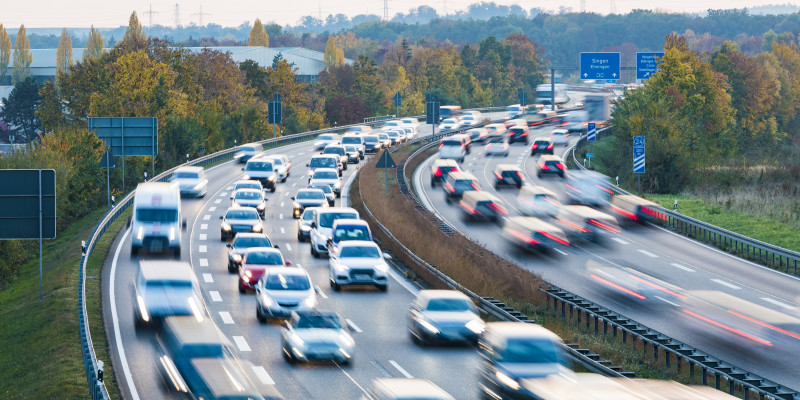In 2018 passenger cars and light commercial vehicles caused 39.1 million tonnes CO2 equivalents while driving on federal motorways, compared to 163 million tonnes for transport sector as a whole. A general speed limit of 120 km/h could reduce greenhouse gas emissions by 2.6 million tonnes CO2 equivalents, or about 6.6 percent of the emissions caused by passenger cars and light commercial vehicles on motorways. Dirk Messner said: “A general speed limit on motorways would make a meaningful contribution to reducing climate change impact. The transport sector in particular has done little in terms of climate change mitigation since 1990. We must take advantage of every opportunity in this area, especially when these measures are virtually cost-free and can be realized immediately. A speed limit on motorways not only helps the climate but also reduces noise and pollutant emissions and increases traffic safety.”
A speed limit is a particularly efficient measure compared to other mitigation measures in transport. The Federal Ministry of Transport and Digital Infrastructure estimates that a reinforcement of rail freight traffic and modernization of inland waterway vessels, measures supported by the UBA as well, would result in emissions reductions of around two million tonnes – but only as of 2030 and at a cost of several billion euro. A speed limit with a comparable climate benefit would cost virtually nothing and can be implemented at once.
Further information
Most recent available data was used as the basis for calculations. This includes data published in 2019 by the Federal Highway Research Institute about average speeds and speed distributions on federal motorways for so-called light traffic (mainly passenger cars and light commercial vehicles). The calculations also included detailed consumption values and carbon dioxide emissions of passenger cars and light commercial vehicles as a function of speed, using the Passenger Car and Heavy Duty Emission Model (PHEM). PHEM provides emission data for the Handbook Emission Factors for Road Transport (HBEFA) and is the database for environmental reporting in many countries and municipalities in Europe.
When calculating the CO2 reductions, only the direct effects are determined and do not include any additional effects such as changes in modal split. Also excluded are the possible medium-term repercussions for the vehicle fleet caused by changes in buying habits, for example an increase in lighter and lower-powered vehicles. Both effects are potential additional climate change mitigation factors.
 Click to enlarge
Click to enlarge


